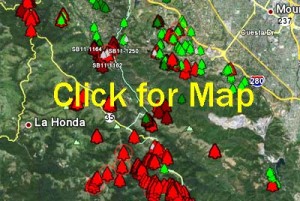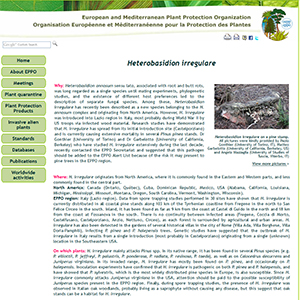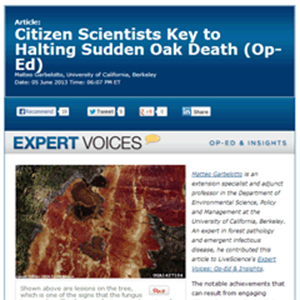Bay shoots do not carry P. ramorum because the pathogen is not systemic in bay. Each leaf is infected independently. Additionally, there is no root infection in most P. ramorum hosts, particularly California bay laurel. However, when bays re-sprout, they may be re-infected.
Once an oak has the oak root fungus Armillaria (often due to excessive watering), most treatments will be ineffective. Be sure the base of the tree is free of mulch and other organic debris and slightly expose the root system at the root collar. While fertilizing may not help, try using one bark application of Agri-Fos + PentraBark. This application provides minimum nutrients, but strengthens the defense mechanisms of the tree. Of course, stop watering unless absolutely necessary. Water should never be administered from July-September.
It sounds like your tree is having problems providing enough water to the canopy to keep the foliage and cambium alive. If you are not watering it, that may be the problem. If you are watering it, your tree may have contracted a root disease. In that case, it is important to clear all organic material at least 3 feet around the stem, slightly expose the root system next to the stump to the air, avoid fertilizers, and water minimally.
A lot depends on when the tree is felled. If a tree is cut in winter, it is possible that the root system will experience an additional year of growth. What happens to the root system depends on many variables, including soil type and presence of other trees of the same species adjacent to the one being felled. If the same species is present and the root systems of neighboring trees are grafted, the roots may be kept alive by trees still standing. Some species, like aspen, will actually sprout new shoots along the root system. Often a stump with roots that are alive will seal the cambium on the stump surface, resulting in a round bump along the entire circumference of the tree right over the cambial area (i.e. just inside the bark).
The first question to ask is what type of irrigation is being used currently on the hedge. Most landscape oak root fungus problems are due to overwatering in summer months. However, Thuja orientalis (=Platycladus orientalis) is quite susceptible to Armillaria even without heavy irrigation as highly susceptible species do not require excessively high soil moisture to be killed.
Prior to any new planting, as much of the old hedge (including roots) should be removed. In addition, any other decaying wood should be removed. Replanting with plants that do not require supplemental watering is best. Some CA natives that make good hedges include: ceanothus, island mountain mahogany, manzanita, and toyon. Non-native possibilities include Leyland cypress and Japanese privet. Keep in mind though that even plant species listed as resistant to oak root fungus will die if overwatered.
A tree’s Critical Root Zone (CRZ), sometimes also called the Root Protection Zone (RPZ), is defined as a circle on the ground corresponding to the dripline of the tree. Unfortunately the “dripline” of a tree can be irregular and hard to define. An alternative method of determining this dimension is to measure the diameter of the tree trunk in inches at breast height (DBH), multiplied by 12, as so:
Trunk diameter in inches at 4 1/2′ (1.4m) above grade x 12 = radius in feet of the CRZ (essentially, 1′ of CRZ radius per 1″ DBH or roughly 1.2m of CRZ per 10cm of DBH).
Bear in mind that root systems vary by depth and spread based on tree species, age, soil type, etc. The root systems of some oaks, for example, can extend well beyond the canopy dripline. This full root zone may extend 2 to 3 times beyond the CRZ.
Damage to the tree roots can be caused by any disturbance inside this area however bear in mind that nearby trenching, paving, or altering drainage patterns outside the immediate RPZ may also significantly affect the tree.









